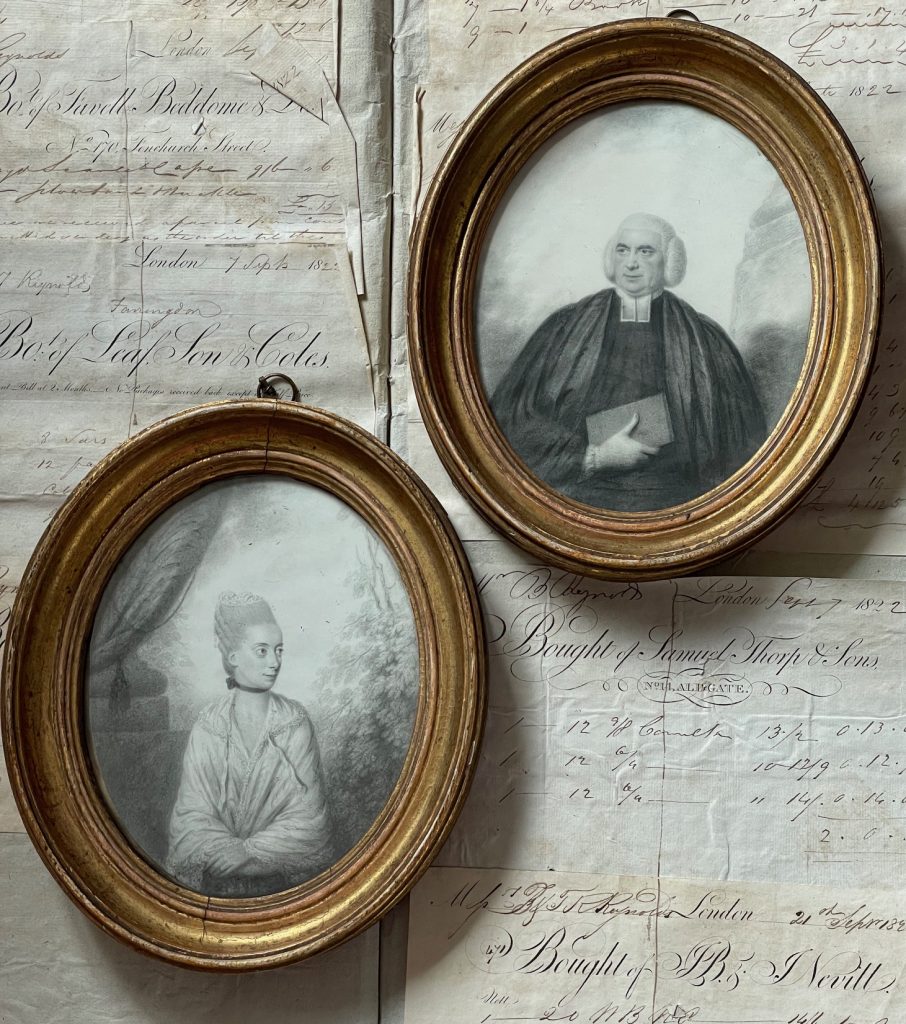
Portrait miniatures, silhouettes, portraits & an omnium-gatherum of historical interest & character.
Enquiries and orders
Robert & Charlotte Carter Thelwall
John Taylor
Sold
This finely drawn pair of half-length plumbago portraits depict the Reverend Robert Carter looking studious in a ‘physical wig’, a style much favoured by professional gentlemen during the eighteenth century, wearing his clerical robe and bands together with his wife, Charlotte, standing in a garden landscape wearing a lace-trimmed surcoat and choker ribbon necklace, her hair in rolled curls à la mouton, a fashion that was popularised in France during the mid-eighteenth century.
Robert was born in 1724 to William and Sarah Carter. He later added Thelwall to his surname, presumably to honour a legacy.
Charlotte was born in 1742, the eldest child of Sir Henry Nelthorpe 5th Baronet and his wife, Eliza Branston. Robert and Charlotte were married on New Year’s Day 1767 at Redbourne in Lincolnshire. Charlotte had a dowry of £4,000 whilst Robert, already an established vicar and almost two decades older, only had £1,000. The couple had one daughter, also named Charlotte. Upon inheriting Redbourne Hall, Robert had the house re-designed by John Carr of York complete with an impressive entrance way. Indeed Robert was so proud of his estate he commissioned the well-known artist George Stubbs to paint a family portrait in 1776 of his wife and young daughter riding through their parkland whilst he strode purposely alongside, his church visible in the background. The portrait can be viewed at The Holbourne Museum in Bath.
Charlotte “a woman of most gentle manners, mild affections, elegant accomplishments, refined humours and sound judgement” died in March 1780, aged 38. Her premature death prompted Robert to write to his brother-in-law, the Baronet, to beg him to take care of their daughter should he die or lose his reason. Upon his death Robert asked to be conveyed in his carriage with “the coffin covered with an oil cloth to conceal it and give it the appearance of a trunk to be carried with great expediency and privacy” to lie with his wife. He then proceeded to marry again!
Plumbago on vellum; the portraits reside in the original gilt wood frames.
Born in 1739, John Taylor was the son of a London customs officer. He studied at St Martin’s Lane Academy before moving to Oxford in 1767 where he forged a career painting portraits of the undergraduates and academics charging between 5 and 15 guineas according to size. He was working in Bristol in 1775 and in Manchester in 1777. Affectionately known as ‘Old Taylor’, he was in his 99th year when he died.
Item Ref. 7583
Size: framed, 215 x 183mm
Provenance: Ex. Scawby Hall, Sotheby's, April 2002 where purchased by the current vendor